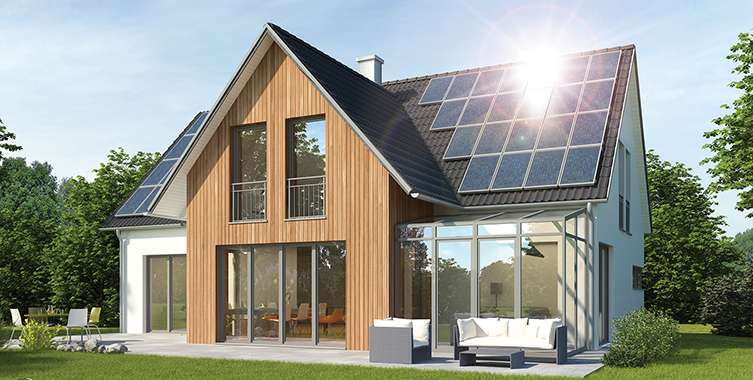Renovating your home is never easy, but doing it in an eco-friendly way can be extra challenging. To help you celebrate Earth Day on April 22, we’re exploring a few ways to make your next home renovation environmentally sound while creating positive change for the planet. Here are five innovative ways to renovate more sustainably.
Something old, something new
Before you start your renovation, stop at your local Habitat for Humanity ReStore. There are more than 100 stores in Canada and 1,000 worldwide, creating a huge double impact through social innovation. The Winnipeg stores are located at 60 Archibald Street and 1565 Inkster Blvd. and are open seven days a week. ReStore accepts donations and resells both new and used building materials, furniture and appliances that in turn, helps fund local Habitat for Humanity home construction projects. You might score the rain shower head or vanity that you’ve been looking at online for half the price! Once your reno begins,
consider these eco-conscious tips to help soften the environmental impact of your project. If you’re patient and determined, garage sales, auctions, flea markets and antique fairs can reveal unexpected finds that will give your reno an original twist.
Get smart
Tackling your kitchen or laundry room? Maybe it’s time to upgrade those inefficient appliances. Any appliance that’s more than 10 years old likely isn’t very efficient. Energy efficient refrigerators are now being designed with tinted glass panel doors. Knock twice and you can reveal what’s inside without letting the cold air escape. Low-flow shower heads, low-flush toilets and water saving faucets will dramatically reduce water consumption — and money down the drain! Similarly, high efficiency washers and dryers will plug you into savings and a more ethical load.
Efficiency Manitoba offers rebates for everything from insulation to windows and doors to solar panels. Their Appliance Recycling Program offers in-home pick-up of your old working fridge and/or freezer, and they’ll even give you a $30 rebate for each one you recycle. Not only will you save money on your energy bills, but you’ll feel good knowing your appliance is being recycled responsibly.
In fact, if you’re planning an extensive home renovation that will significantly reduce your home’s energy usage, your project could qualify for rebates through their Home Energy Retrofits. Each home is unique, so you’ll need to have an EnerGuide home evaluation completed by an energy advisor. They’ll identify energy saving opportunities that are suitable for your home, and you’ll receive a recommended upgrade report to help plan your major retrofit and achieve substantial energy savings.
There are many benefits to undertaking a home energy retrofit:
• Significantly reduced energy bills and long-term cost savings.
• Improved occupant comfort and indoor air quality.
• Reduced maintenance costs and activities.
• Increased resilience to climate change.
• Reduced carbon footprint and environmental impact.
• Increased resale and property value.
For more information on Manitoba Hydro rebate programs, visit www.efficiencymb.ca
Prepare to be floored
For a genuine “greenovation,” investigate unusual reclaimed flooring solutions — like bowling alley maple or heartwood pine. Sold in lengths of up to 14 feet, repurposing the former lanes with foul lines, target dots and arrows intact could be right up your eco-friendly (bowling) alley. For a more intensive DIY project, consider a copper penny floor. You will need about 278 pennies per square foot, but it should be easy to find friends willing to donate the discontinued coins to your cause!
There are several flooring options available to consumers today. For pet owners and parents, the search for non-toxic, allergen-free options can be even greater. Look for natural slate, void of a chemical sealant, or consider non-toxic VOC-free polished concrete. Natural undyed wool carpets are made from a renewable resource and are biodegradable too.
Paint it green
Low or zero-VOC paints have been growing in popularity because they eliminate the headache-inducing “new paint smell.” The decrease in off-gas is thanks to reduced volatile organic compounds (VOC), the culprits responsible for irritated eyes, asthma and nausea. Companies like Blue Moose Recycled Paint divert unwanted paint returned to Household
Hazardous Waste Depots. This paint would otherwise be destined for toxic incineration or landfill sites. The recycled brand name paints are pre-tinted and re-manufactured.
Plant and mineral-based paints are made with natural ingredients like clay, citrus oils, plant dyes, beeswax and milk proteins. Milk paints are also environmentally friendly as they are non-toxic, biodegradable, non-flammable and antibacterial.
Hip hemp hooray
Hemp crops are attractive because they require no fertilizer or pesticides and need little water. The manufacturing process is dramatically less demanding than producing polyurethane insulation which is not recyclable or reusable like hemp. A hemp wool panel (with a R10 value) requires 3.4 kWh of energy to produce, while cellulose eats up 5.5 kWh and polyurethane a staggering 48.4 kWh. The non-toxic insulation can even be applied without gloves. While it costs more than traditional fibreglass, there are distinct advantages to choosing hemp insulation — if it gets wet, it can be removed, dried out and re-installed. It resists pests. And, it’s recyclable and biodegradable.
Best of all, there are several Canadian companies that offer these products, so check them out if you’re planning on using an alternative insulating product that’s good for the environment.
Good luck with your renovations, and have a happy Earth Day!
— REALTOR.ca



